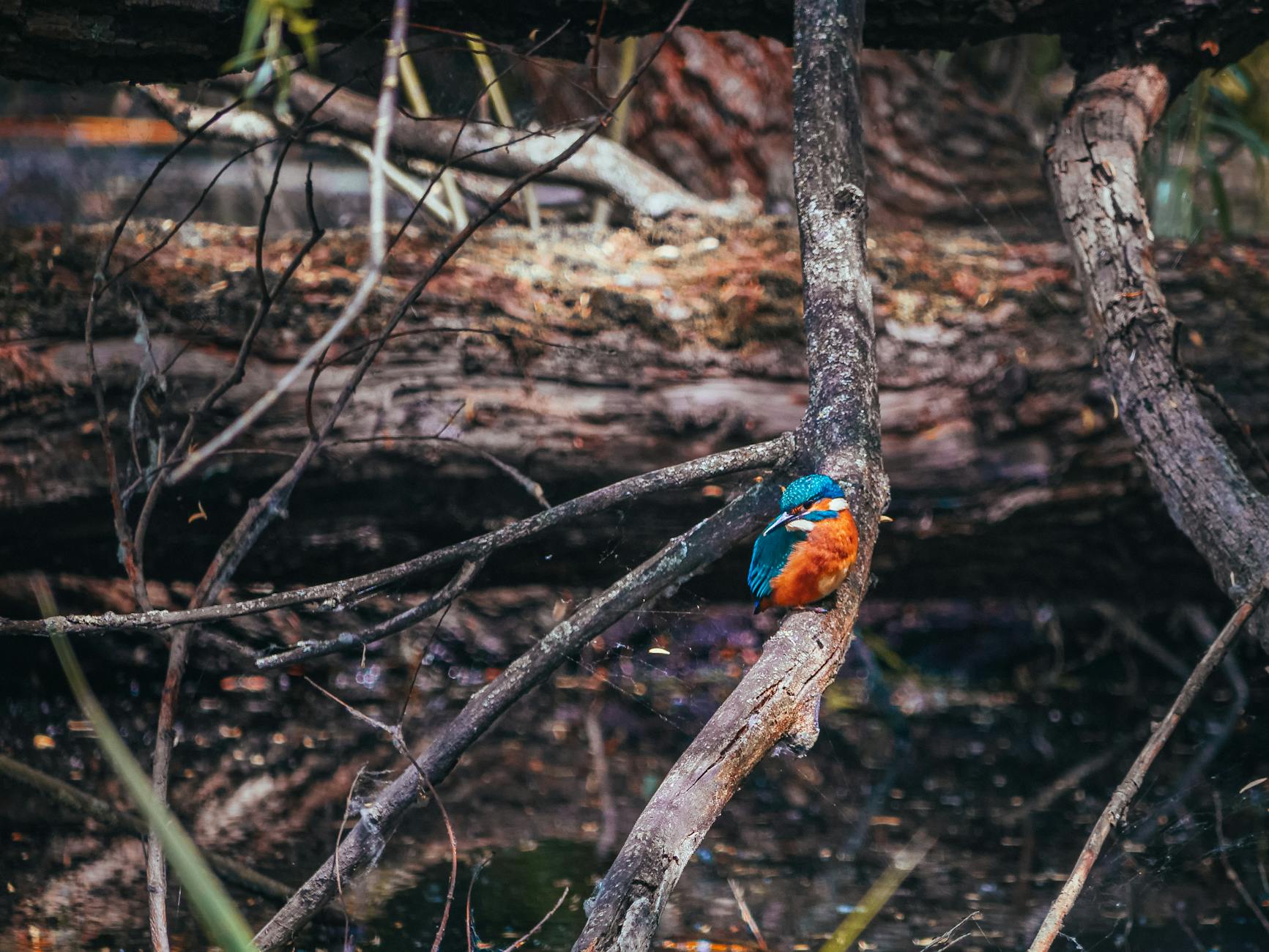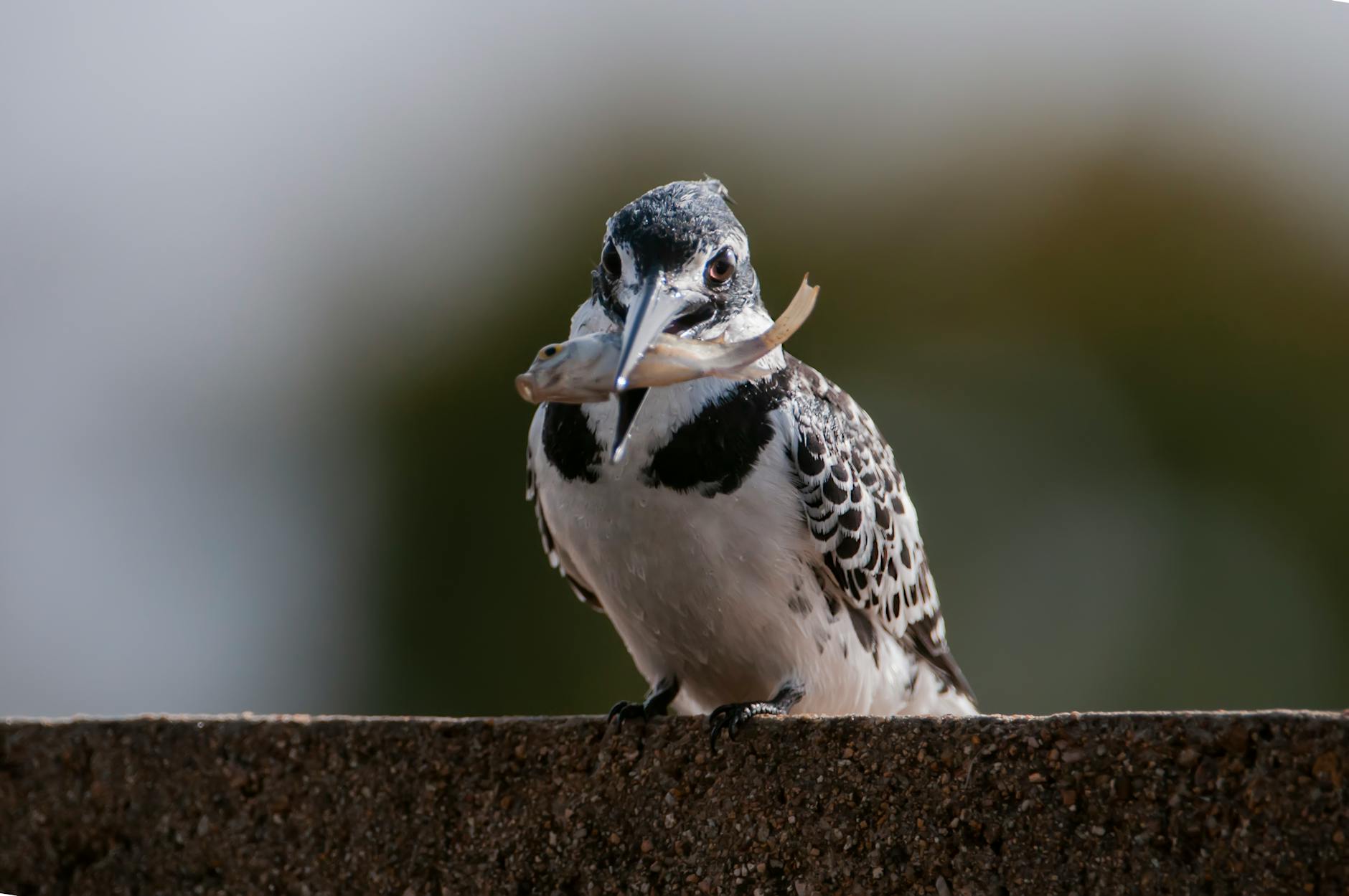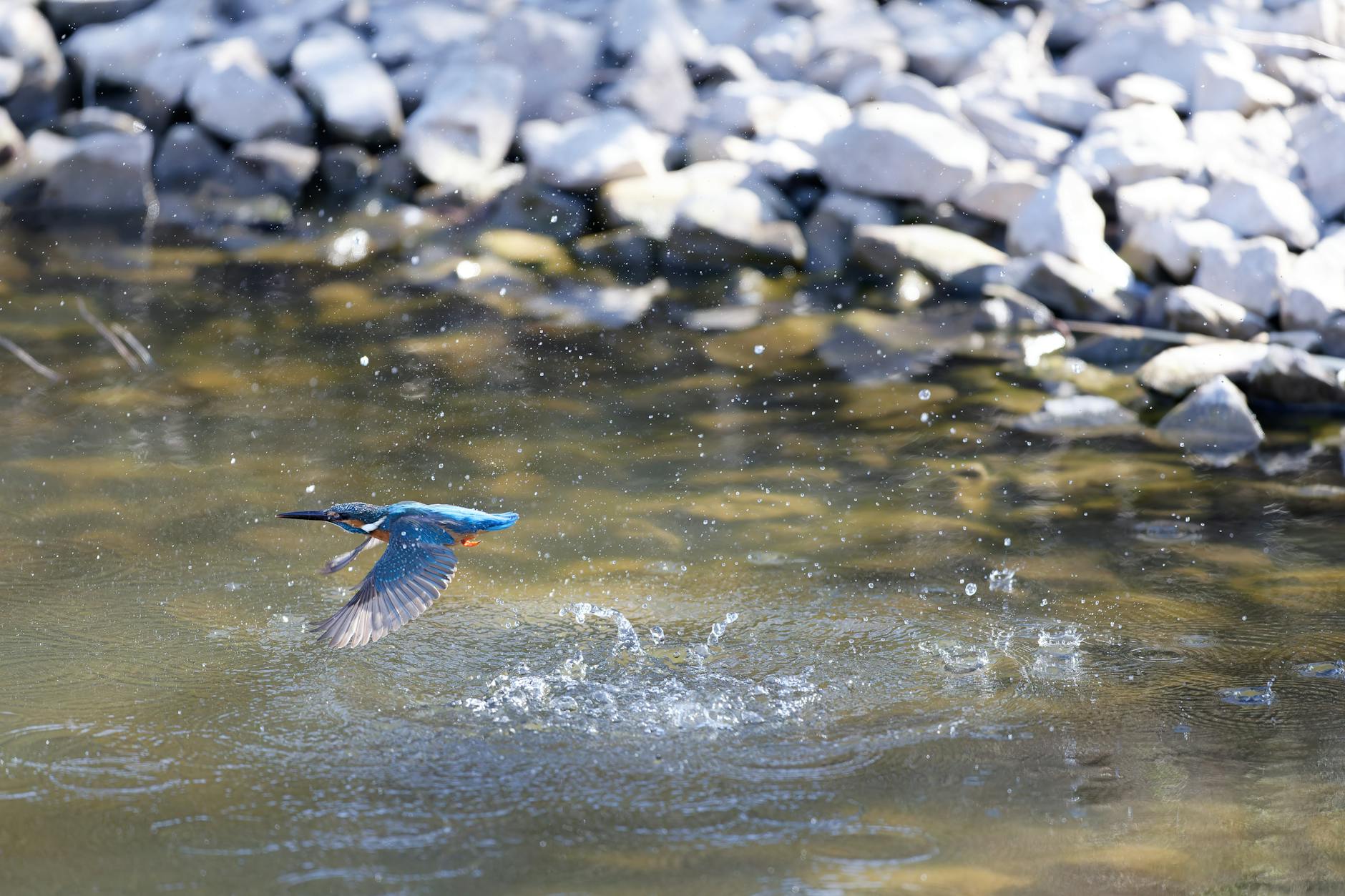What Do Kingfishers Eat? Understanding Their Diet and Hunting Habits
Kingfishers are remarkable birds known for their vibrant colours and agility. But what do they actually eat? These skilled hunters mainly feast on fish, targeting species like minnows and sticklebacks. However, their diet isn’t limited to aquatic life; they also consume invertebrates, amphibians, and even small mammals, depending on their habitat.
Understanding what kingfishers eat is essential for appreciating their role in the ecosystem. These birds help maintain fish populations and contribute to the health of aquatic environments. In this post, we’ll explore the various foods in their diet, how they hunt, and what this means for their survival and the habitats they inhabit. Whether you’re a birdwatcher or simply curious about wildlife, this insight into kingfisher feeding habits will deepen your appreciation for these fascinating creatures.
Overview of Kingfishers
Kingfishers are captivating birds that thrive in diverse environments, making them a fascinating subject of study. Their vibrant plumage and incredible hunting skills stem from their specific habitats and unique physical attributes. To truly appreciate what kingfishers eat, it’s essential to understand where they live and how they are built.
Habitat and Distribution
Kingfishers can be found across various habitats, ranging from freshwater to coastal regions. They are often seen near rivers, lakes, and marshes, where abundant food sources like fish and invertebrates exist. Their habitats typically include:
- Aquatic Areas: Kingfishers are most commonly associated with water bodies. They prefer habitats where they can easily catch their prey. Such areas include streams, lakes, and ponds.
- Forested Regions: Some species inhabit wooded areas close to water sources. These settings provide cover and nesting sites. For example, the Common Kingfisher prefers dense vegetation along riverbanks.
- Urban Environments: Interestingly, some kingfishers have adapted to urban spaces, frequenting parks and gardens with water features.
These birds have a widespread distribution, from tropical regions to temperate climates. They are present in parts of Europe, Asia, Africa, and the Americas. The diversity in their habitats reflects their adaptability and hunting prowess. For more details about the habitats of kingfishers, check out the Animal Diversity Web.
Physical Characteristics
Kingfishers possess distinct physical traits that enhance their hunting skills. They are easily recognisable due to their:
- Long, Sharp Bills: Their pointed bills are specially adapted for catching fish and probing into crevices for invertebrates. This beak shape is essential for their diet and fishing techniques.
- Brilliant Plumage: These birds are often adorned with striking colours, which serve not just for mating displays but also for camouflage within their habitats. The bright colours can be a double-edged sword; while it may attract mates, it can also make them noticeable to predators.
- Exceptional Eyesight: With keen eyesight, kingfishers can spot prey from considerable distances. Their vision allows them to judge distances accurately, crucial for successful dives into the water.
Their robust body and agile flight also contribute to their ability to hunt effectively. Overall, these traits make kingfishers formidable predators. For more information on their physical characteristics, visit Wikipedia on Kingfishers.

Photo by Kieren Ridley
Primary Diet of Kingfishers
Kingfishers are primarily known for their impressive diet, which mainly consists of various aquatic creatures. Their hunting strategies and food preferences have evolved to include a range of species, allowing them to thrive in their habitats.
Fish
Fish are at the core of a kingfisher’s diet. They predominantly consume smaller species, making them excellent hunters in shallow waters. Common types of fish that kingfishers favour include:
- Minnows: These small fish are a staple in the diet of many kingfisher species.
- Sticklebacks: Known for their spiny fins, sticklebacks are another frequent target.
These birds are skilled at spotting fish from above, often diving with remarkable precision. The availability of fish in their environment plays a significant role in their feeding habits. For more insights about their diet, check out the Common Kingfisher (Alcedo atthis).
Aquatic Invertebrates
Kingfishers don’t just feast on fish; they also indulge in a variety of aquatic invertebrates. Here’s a closer look at their preferences:
- Aquatic Insects: Kingfishers actively hunt insects, which are abundant in their habitats. These include dragonflies, mayflies, and water beetles.
- Crustaceans: Freshwater shrimp and small crabs are also part of their menu. These creatures provide essential nutrients and protein, crucial for their energy levels and breeding success.
Their ability to catch both fish and invertebrates allows kingfishers to adapt to changing food supplies. For a deeper understanding of their feeding habits, visit BirdFact.
Amphibians and Other Prey
While fish and invertebrates dominate the diet, kingfishers occasionally include amphibians and other small creatures. This section of their diet comprises:
- Frogs: Some species of kingfishers take advantage of readily available frogs. Their quick reflexes aid them in capturing these slippery amphibians.
- Small Reptiles: Occasionally, they may hunt small lizards or snakes, diversifying their food sources as needed.
This varied diet illustrates their adaptability and opportunistic feeding behaviour. By employing different hunting techniques, kingfishers can thrive in various environments and still meet their nutritional needs. For further details on their dietary habits, see this resource on feeding habits of kingfishers.
Diet Variations Among Species
Kingfishers exhibit distinctive diets that vary between species. Understanding these dietary preferences can shed light on how they adapt to their environments. Two noteworthy species are the Belted Kingfisher and the Common Kingfisher, each with unique feeding habits shaped by their surroundings.
Belted Kingfisher
The Belted Kingfisher is known for its striking plumage and distinctive hunting techniques. This species primarily feeds on fish, obtaining most of its meals from shallow waters. The fish they target are typically small species that swim near the surface, making for easy catches. Common fish in their diet include:
- Minnows: Often abundant in freshwater habitats, these small fish are a staple.
- Shiners: Especially in their breeding grounds, shiners serve as a frequent food source.
Belted Kingfishers employ a “sit-and-wait” strategy, perching on overhanging branches or rocks, scanning for prey beneath the water’s surface. Once spotted, they dive in with remarkable agility. Interestingly, they also catch small crustaceans and aquatic insects when fish are scarce. Their feeding preferences highlight their adaptability to different habitats, from rivers to lakes. For more details about their feeding behaviours, visit the Bird of the Week: Belted Kingfisher.

Photo by Frans van Heerden
Common Kingfisher
The Common Kingfisher is a more familiar sight in many habitats across Europe and Asia. This species relies heavily on fish, catching them by diving from perches above water. Their diet mainly consists of:
- Small Fish: Species like sticklebacks and minnows are common targets.
- Crustaceans: These include prawns and small crabs, often found in the same waters.
What makes the Common Kingfisher particularly interesting is its reliance on specific habitats for hunting. They thrive near clean, shallow waters where fish are abundant. The vegetation along rivers and lakes provides excellent cover for stalking prey. This connection between habitat and diet underlines the importance of ecological balance. For insights into their habitat and diet, check out the Animalia Bio: Common Kingfisher.
Both the Belted and Common Kingfishers illustrate how dietary needs and hunting practices adapt to their environments. Understanding these variations provides a richer view of their ecology and conservation.
Hunting Techniques
Kingfishers employ a range of impressive hunting techniques that ensure their success in capturing prey. Their remarkable agility and keen senses play a significant role in how they find and catch food. In this section, we’ll explore two primary methods kingfishers use: their diving behaviour and their perching strategies.
Diving Behaviour
Diving is one of the most captivating aspects of a kingfisher’s hunting technique. When targeting fish, these birds can dive head-first into water, demonstrating incredible precision and speed. Here’s how they do it:
- High-Speed Dives: Kingfishers can reach speeds of up to 40 kilometres per hour (25 mph) when they plunge into the water. This swift descent allows them to surprise their prey.
- Strategic Approach: Before diving, they often survey the area from a perch. Once they spot a fish, they launch themselves into a steep dive, often hitting the water with minimal splash for stealth.
- Beak Precision: Their long, pointed beaks are perfectly designed for piercing through water to snatch fish. The beak acts like a pair of pincers, grasping the fish with strength and accuracy.
Studies have shown that these birds have unique adaptations to minimise the impact of their dives, preventing injuries like concussions. You can learn more about this remarkable adaptation at Smithsonian Magazine.

Photo by ao tak
Perching and Observation
Perching is a vital hunting technique for kingfishers. These birds take advantage of elevated spots, allowing them to survey their surroundings effectively. Here’s how perching contributes to their hunting success:
- Vantage Point: From a perch, kingfishers have an unobstructed view of the water below. This position enables them to spot movement and identify potential prey from a distance.
- Silent Watch: While perched, kingfishers can remain incredibly still. They watch and wait for the perfect moment to strike, making them patient hunters.
- Minimal Energy Use: By scanning for fish from a fixed location, they conserve energy until they are ready to dive.
This technique is instrumental in enhancing their hunting efficiency, particularly when fish are less active. For insights into how kingfishers hunt, visit How It Works Daily.
By combining these hunting methods—dynamic diving and strategic perching—kingfishers maximise their chances of capturing fish and other prey effectively.
Impact of Diet on Behaviour
The diet of kingfishers plays a crucial role in shaping their behaviour and ecological interactions. Their feeding habits influence not only their individual health and reproductive success but also their interactions with the ecosystem around them. Understanding how diet impacts behaviour helps reveal the intricate balance kingfishers maintain in their environments.
Foraging Patterns
Kingfishers exhibit specific foraging patterns that are integral to their survival. These habits can reveal much about their adaptability and strategies.
- Daily foraging: Kingfishers tend to have specific times for hunting, often early in the morning or late afternoon. This behaviour corresponds with the activity patterns of their prey, ensuring they maximise their hunting efficiency.
- Hunting Techniques: The birds employ various techniques, including diving and perching, to catch fish and invertebrates. They often stake out vantage points to survey the water before making their move.
- Competition: Foraging habits can also indicate competition among species. Kingfishers often face competition for food, which can lead to changes in behaviour. They may shift their foraging areas to avoid competition or adapt their hunting strategies based on prey availability.
These patterns demonstrate the kingfishers’ skilled adaptation to environmental cues. For further insights on their foraging behaviour, check out this article on feeding habits.
Seasonal Changes in Diet
Diet alterations throughout the seasons significantly impact kingfishers’ behaviour. Their feeding preferences can shift based on food availability, which, in turn, influences their ecological roles.
- Winter: During colder months, kingfishers often face challenges in finding fish, leading them to shift their diet towards invertebrates or amphibians. This seasonal adaptability is critical for survival, as it allows them to utilise alternative food sources.
- Breeding Season: In spring and summer, kingfishers require energy-dense diets, particularly during the breeding season. They increase their fish intake to provide adequate nutrition for their young. This seasonally diverse diet directly influences their reproductive success.
- Foraging Locations: Seasonal changes also prompt shifts in foraging locations. During dry spells, kingfishers may migrate or move to different water sources where fish populations are more abundant.
These seasonal dietary adaptations highlight the importance of ecological balance. The availability of prey shapes not only kingfisher diets but also their behaviour and habitat use. For more information on seasonal feeding patterns, see the detailed research on diurnal activity patterns.
Conclusion
Kingfishers are fascinating birds with diverse diets primarily focused on fish, but they also consume invertebrates, amphibians, and occasionally small mammals. This varied menu highlights their adaptability and skill as hunters.
Understanding their feeding habits is crucial for appreciating their ecological role. Healthy populations of kingfishers reflect thriving ecosystems, underscoring the importance of conserving their habitats.
As you deepen your knowledge of these remarkable creatures, consider how your actions can support wildlife conservation. What steps will you take to protect the environments where kingfishers thrive?










